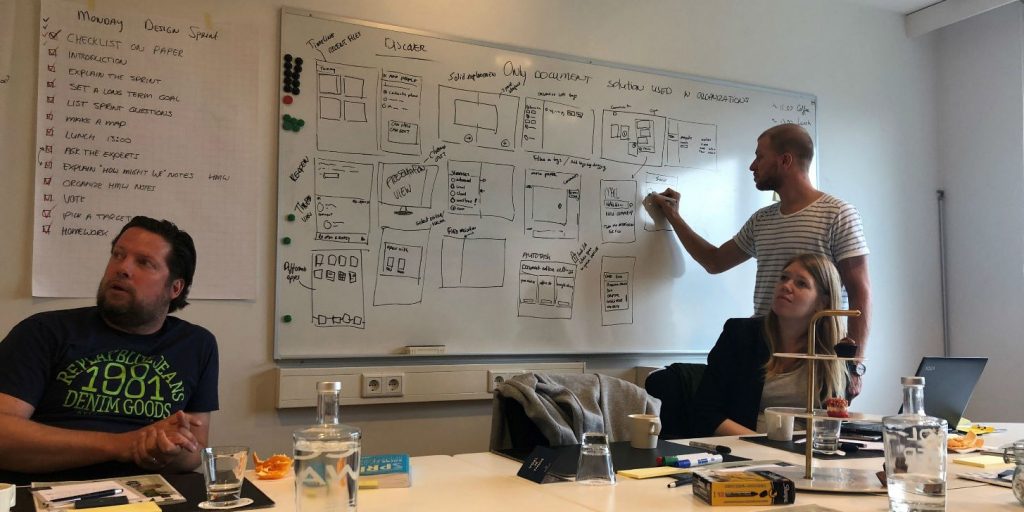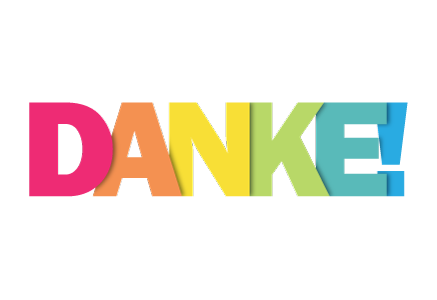Sprints are hot! Ever more often you hear people talking about designs sprints. It seems like every organization is currently sprinting. So is Kopano. But why? To answer this question, we need to understand what a design sprint is. Is it just a hip and creative method used by fancy startups in Silicon Valley, or can it actually add value to your company?
What Is a Design Sprint?
The design sprint is a 5-day program created by Jake Knapp from Google ventures in which you come up with an idea, build it and test it. It’s an efficient way to find out whether an idea has the potential to generate a huge ROI or not. Because a design sprint only takes up five days, it can save companies months of development time.
Still, if you want to do it right, you should appreciate that a sprint is very intense and requires lots of energy and focus. With a team of 5- 7 people, a design sprint costs about 200 to 300 hours (including preparation time).
If you choose the right goals, a design sprint is definitely worth the investment but it is important to prepare yourself well. If you think you’re up to the challenge, I’d recommend you to start with reading the book “Sprint”, in which Knapp clearly describes the sprint process and provides a great timeboxed schedule for the week.
Things to Think About
As said, when choosing the right challenge, a design sprint is definitely worth the investment. But how do you prepare one?
Start with the right challenge
If you don’t know where you should begin when working on a new product or service, a design sprint is ideal to give you a jump start. You should start with deciding which challenge you will try to tackle.
Your scope should not be too large and not too small. Don’t try to design a complete lunar lander within a week, but instead focus on a smaller task like a specific improvement of the landing mechanism. Also be careful not to focus too much. Spending five days choosing a color for door handles will only waste a lot of time from your team.
After you have chosen your challenge – a new business plan, a product to extend your portfolio, a marketing strategy to reach new customers – it is time to form a team.
Gather a team
Selecting the design sprint group is clearly described in “Sprint”. A sprint group should be about seven people, preferably from different departments, and include a decision maker and facilitator.
The group should take the sprint seriously and be aware that they’ll be attending a full week of intensive brainstorming and development. If you’re working in a small company it is advisable to explain to the rest of your colleagues why they are not invited to join the sprint team and/or invite them for the expert sessions on Monday.
Never start a sprint without having the CEO or product owner on board as the decider because afterwards, you don’t want to defend the choices that were made, find out you made the wrong assumptions or made decisions that the ones ultimately responsible do not fully support.
Prepare and instruct
When doing your first design sprint you’ll find out that it takes time to understand all the different assignments of the sprint. Therefore, it is important to be well prepared. At least one of the participants should know the ins and outs of all the assignments.
For my first sprint, I prepared myself by doing the online Become a Design Sprint Expert course by Udacity. This course was created in collaboration with experts from design agency AJ&Smart and is well structured and fun. Top designers and even Jake Knapp himself help you understand the material with instruction videos that take you through the sprint process step-by-step. Use this knowledge to be the facilitator of the sprint or instruct your facilitator before starting.
It is also recommended to hand out the sprint book to all the participants of the sprint. Not only because it’s a good read but because it emphasizes the importance of the sprint. It will also help to make group members familiar with the assignments, and get them into the vibe.
Find the right location
Whiteboards, markers, sticky notes: a design sprint involves a high level of creativity. Therefore, when choosing a location for the design sprint, consider a creative atmosphere. Go for a light space that is large enough for all the participants to be comfortable for five days. Make sure there is enough whiteboard space for the complete week because you don’t want to erase all your creative steps during the week because you need to reuse the whiteboard. Also, consider a wall where sticky notes do actually stick, nothing is more annoying than falling sticky notes all the time.
One of the nice things about the design sprint is that you’re getting into a special creative working vibe with your team. Don’t spoil this. Prevent distraction from your daily office routine. It helps when the conference room and break room is isolated from your colleagues, so you are not disturbed by so-called ‘important’ matters.
Let’s go!
When all the preparations are done it is time to start your sprint. Take a good rest at the weekend to start fresh and awake on Monday. When you are the one who initiated the sprint within your company it will be exciting, but keep in mind to have fun. The sprint is a team effort, so you’re not going to be judged by the results. You will notice that any result is valuable even when your tests on Friday do not succeed. Don’t be afraid to work on a solution which seems a bit idealistic or extraordinary. Often you don’t get the change to test something exciting in such a short time, so go for it!
Want to know more about our first design sprint experience? In my next blog, I’ll tell you all about it. Stay tuned!






